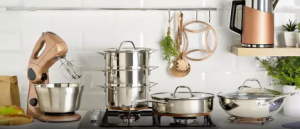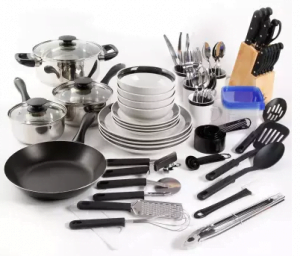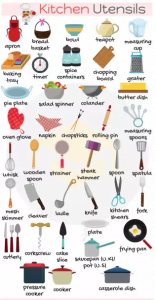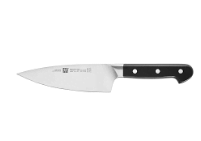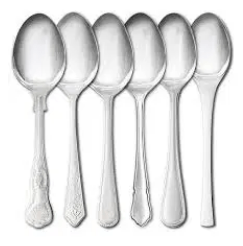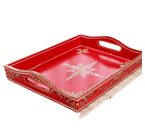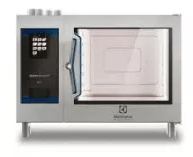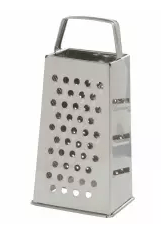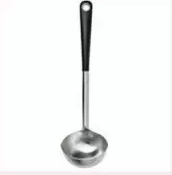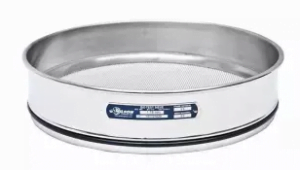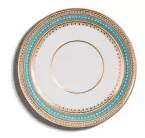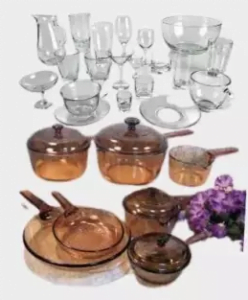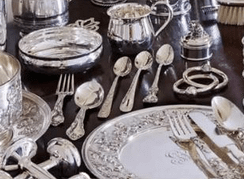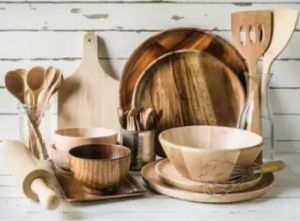A kitchen utensil is a small hand hold tool use for food preparation. Common kitchen tasks include cutting food items to size, heating food on an open fire or on a stove, baking, grinding, mixing, blending and measuring. In this page we describe Kitchen Utensils | Cooking and Baking Tools.
Contents
Kitchen Utensils:
The secret of cooking is in the right tool for the job. A kitchen utensil is a small hand hold tool use for food preparation. They also called Cooking and Baking Tools. Common kitchen tasks include cutting food items to size, heating food on an open fire or on a stove, baking, grinding, mixing, blending and measuring. A utensil is a Tool for cooking.
Utensils may be categorize by use with terms derived from the word “ware” kitchenware, ovenware and bakeware. Kitchen utensils that are for use inside ovens and for baking. Cookware, merchandise used for cooking in the Kitchen.
A partially overlapping category of tools is that of eating utensils. which tools are use for eating. Some utensils are both kitchen and eating utensils. Cutlery can be use for both food preparation in a kitchen and as eating utensils when dining. Other cutlery such as forks and spoons are both kitchen/eating utensils. Different utensils are make for each task. Some utensils made by silver, clay, Steel, wood and glass etc. For example spoon, plates, knives, glass and bowl etc.
- Conducts heat good.
- Use Lifetime.
- Inexpensive.
- Made of metals.
- Chemical-free.
- It can be use over any cooking food.
- Food cooks beautifully and it’s a great way to brown your food.
- Extremely heavy.
- You can not use soap to clean it.
- Grease can turn rancid in pores.
- It will rust if not properly maintained.
Kitchen Utensils List:
Other Tools used for various types of kitchen utensils although not strictly denoting a utensil. That is specific to the kitchen. They are according to the materials. They made of again using the “-ware” suffix (rather than their functions) earthenware (utensils made of clay) silverware (utensils made of silver) glassware (utensils made of glass) woodware (utensils made of wood) and others. These latter categorizations include utensils made of glass, silver, clay, and so many others that are not necessarily kitchen utensils.
We give some utensils list of the Kitchen which is important in our Kitchen. We use these utensils daily in our lives:
- Plates.
- Knives.
- Spoons.
- Bowls.
- Tawa.
- Trays.
- Ovens.
- Cutting boards.
- Grater.
- Ladle.
- Jugs.
- Pressure Cooker.
- Juicer Blender.
- Hot Pot.
- Rolling Pin.
- Scissors.
- Slotted Spoon.
- Spatula.
- Fri pan.
- Saute pan.
- Gas Stove.
- Sauce pot.
- Cake pan.
- Cups.
- Saucer.
- Colender.
- Appliances.
- Napkin.
- Food Storage Containers.
- Sponge.
- Steak hammer.
- Basket.
- Tea Pot.
- Sieve.
- Fork.
- Apron.
Plates:
A plate is a broad, but mainly flat vessel on which food can be serve. A plate can also be used for ceremonial or decorative purposes. Easy to clean by hand. Most plates are circular but they may be any shape or made of any water resistant material. Plates are Dishwasher and Microwave Safe. Plates are dishware and tableware. That are found in wood, pottery, steel and metal.
Plate is perfect for complementing your existing dinnerware. The well, the bottom of the plate where food is placed. Plates are commonly made from ceramic materials such as bone china, porcelain, glazed earthenware and stoneware, as well as glass, wood, metal and stone has used.
Chef’s knife:
A general purpose utensil such as a chef’s knife may be use for a variety of foods. Other utensils are highly specialize. It may be use only in connection with preparation of a particular type of food such as an egg separator or an apple corer.
Some specialize utensils are use when an operation is to be repeat many times or when the cook has limited dexterity or mobility. The number of utensils in a household kitchens varies with time and style of cooking.
Spoons:
A spoon is a utensil consisting of a small shallow bowl, oval or round at the end of a handle. An eating or cooking tool that has a small shallow bowl attached to a handle. We use spoons to eating, cooking, making, mixing and measuring food. Now a days, spoons made from metal, wood, porcelain or plastic. All types of spoons are as follows:
- Bouillon spoon
- Caviar spoon
- Chinese spoon.
- Coffee spoon
- Demitasse spoon
- Dessert spoon
- Egg spoon
- French sauce spoon
- Grapefruit spoon or orange spoon
- Gumbo or Chowder spoon
- Horn spoon
- Iced tea spoon or Parfait spoon
- Korean spoon
- Marrow spoon or marrow scoop
- Melon spoon
- Plastic spoon
- Rattail spoon
- Salt spoon
- Saucier spoon
- Soup spoon
- Cream-soup spoon
- Teaspoon
- Tablespoon
- Seal-top spoon
Bowls:
A bowl is a round dish or container. It typically used to prepare and serve food. The interior of a bowl is characteristically shaped like a spherical cap, with the edges. This makes bowls especially suited for holding liquids and loose food. As the contents of the bowl are naturally concentrated in its center by the force of gravity. The exterior of a bowl is most often round but can be of any shape including rectangular etc.
The size of bowls varies from small bowls. It used to hold a single serving of food to large bowls. Such as punch bowls or salad bowls that are often used to hold or store more than one food. There is some overlap between bowls, cups, and plates. Very small bowls, such as the tea bowl are often called cups. while plates with especially deep wells are often called bowls.
Trays:
A tray is a shallow platform designed for the carrying of items. Your little sister and her friends will get pretty excited if you bring them a tray of chocolate cupcakes. It can be fashioned from numerous materials, including silver, brass, sheet iron, paperboard, wood, melamine, and molded pulp.
Trays are flat, but with raise edges to stop things from sliding off them. It cleans up very well. It holds all my plates and bowls. Outdoor use includes full-time table trays for patio tables.
Ovens:
A similar device usually lined with a refractory material that used for drying substances, firing ceramics and heat treating etc. In conventional ovens the pieces of dough are loaded and the baked goods removed from the same side.
This is commonly used for baking, cooking, broiling, toasting, defrosting and roasting. For roasting, baking and cooking we use mostly gas oven, baking oven and microwave oven.
Grater:
A grater, also known as a shredder, is a kitchen utensil used to grate foods into fine pieces. There are four or six sides of a grater. All side used for cutting/chopping fruits and veges in different shapes. The modern grater was invented by François Boullier in the 1540s, originally to grate cheese.
A grater has larger holes and cuts things into ribbons or strands. Graters are wonderful for shredding cheese or garnishing with citrus peels. A zester will have much smaller holes than a grater does. For the most part, the same way as a grater does, but just on a smaller scale.
Ladle:
A ladle is a type of spoon used for soup, stew or other foods. A large long handled spoon with a cup shaped bowl used for serving soup or sauce etc. Although, Its available in different designs. A typical ladle has a long handle terminating in a deep bowl.
The ladle help us to the handle to facilitate lifting liquid out of a pot or other vessel and conveying it to a bowl. Some ladles involve a point on the side of the basin to allow for finer stream when pouring the liquid.
In modern times, ladles are usually made by the same stainless steel. They can be made by aluminium, silver, plastics, melamine resin, wood, bamboo or other materials. It can be use for sauces, condiments, soup or also other liquid etc.
Sieve:
A utensil consisting of a wire or plastic mesh held in a frame. Sieve also commonly known as Fine mesh strainer. A strainer is a form of sieve used to separate suspended solids from a liquid by filtration. It used for straining solids from liquids for separating coarser from finer particles or for reducing soft solids to a pulp.
In cooking, a sifter is used to separate and break up clumps in dry ingredients such as flour etc. It’s a device for separating wanted elements from unwanted material. It is characterizing the particle size distribution of a sample. It typically using a woven screen such as a mesh or net or metal.
Spatula:
A spatula is flat, flexible blade. Used to mix, spread and lift material including foods, drugs, plaster and paints. Spatula is great for frosting and smoothing iceing on cakes without getting your fingers in the icing.
Its shape is Ergonomic handle for comfort and control. It has steel blade, plastic handle. Rack dishwasher safe however for best results, wash in warm, soapy water before first and after each use.
Saucer:
A saucer is a type of small dishware. While, a saucer was used for serving condiments and sauces. Currently, the term is used to denote a small plate or shallow bowl that supports a cup.
Usually, its one used to serve coffee or tea. Saucer is a small, rounded dish that sits beneath a tea or coffee cup.
Sponge:
Sponge a soft substance that is full of small holes. It can absorb a lot of liquid and is used for washing and cleaning. The action of rubbing Something or someone with a wet sponge or cloth in order to clean it.
Mostly people use sponge in their kitchens for washing and cleaning pots, stove, refrigerator etc.
Earthenware:
Earthenware glazed or unglazed non vitreous pottery. It has been normally fire below 1200 °C. Basic earthenware often called terracotta. It absorbs liquids such as water. However, earthenware can made impervious to liquids by coating it with a ceramic glaze. Which the great majority of modern domestic earthenware has.
The main other important types of pottery are porcelain, bone china, and stoneware. All fired at high enough temperatures to vitrify. Clay pot’s porous nature allows both moisture and heat to circulate through the food, which results in slow yet aromatic food. It also retains the nutriment of the food. Which lost in other types of utensils.
Due to slow cooking and porous nature of clay pots, the moisture and aroma tends to stay in the pot without losing any nutrient. Hence, making it flavor some. It also has an earthy flavor added to it. Which we bet you may not get in any other utensil.
- Clay is alkaline in nature and when it interacts with the acidity in the food. It neutralizes the pH balance eventually making it healthier.
- Due to its heat resistance, the food retains all the natural oils and moisture while slow-cooking. Hence, extra oil need not be added.
- Earthen utensils are not very expensive as compare to most other types of utensil.
- Cooking in a clay vessel infuses the food with many important nutrients like calcium, phosphorous, iron, magnesium and sulphur.
Disadvantages of cooking in earthenware:
- It gets hot and wreck easily.
- You can’t wash it with your regular soap and stuff.
- They are delicate.
Stainless Steel:
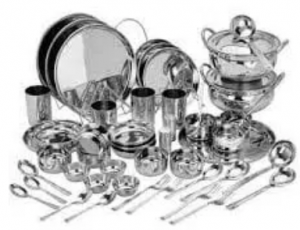
Crafted with stainless steel & silicone non – stick materials, these timeless stainless steel utensil set are beautiful housewarming gifts. With measuring cups & measuring spoons, skimmer, slotted spatula, garlic press, cheese knife, tea strainer, wine opener, potato peeler & more, you have everything you need to cook masterful meals.
Bring out your inner chef with this elegant kitchen tool kit that makes you own your kitchen. There is nothing better than that moment. When you’ve got the right spatula in your hand for the very first time. We wanted kitchen tools that made us feel like kitchen heroes. You are a better cook than you imagine. You just need the tools to prove it. With the cooking tools set, you can win meal time any day of the week.
- Use Lifetime.
- Inexpensive.
- Made of metals.
- Chemical-free.
- Extremely heavy.
- It will rust if not properly maintained.
Glassware:
Glassware is containers or objects made from glass. An example of glassware is a set of glass cups. Clear Glass help us in Watching Food and Heat Evenly. Glassware utensils are available in different designs in the market. we normally use in our kitchen. Especially, we used glassware utensils for guests in marriages, birthdays and parties etc. DMAR’s clear glass deep dish you monitor baking and know the state of food. It is ideal for water based cooking. They are safe in freezer, microwave oven and broiler etc.
A glassware set contains: quart baker, quart casserole dish with glass cover, loaf dish, plates, bowl, pie dish, ounce measuring cup, glass, jug, mug, Teacup with saucer, teapot and ounce custard cups with plastic lids.
Duration: This glassware set is microwave, pre heated oven, refrigerator, freezer and dishwasher safe. Plastic lids are safe to clean on the top rack of dishwasher.
Safe: Glassware is healthier than metal and plastic. It will not warp, stain, retain smells or leach dangerous chemicals into food.
Five Year Warranty: Its protective limited five-year , this glassware set promises to impress for many years to come. Glassware set made in USA.
Glassware dishes are dishwasher safe to make cleaning a breeze. Spend less time scrubbing and soaking your glassware. It is perfect for storing food in the refrigerator or freezer. It represent the Original Taste of Ingredients. Our pie plate made of non glass, which not produce odor. It not absorb food odors, food flavors or food stains. You can enjoy original taste of food.
- Affordable.
- Beautiful designs.
- Glass is andimpermeable.
- Zero chemical interactions.
- Heat Absorbent.
- It break rapidly.
- Others.
Silverware:
Silverware is define as any utensils that you use to eat. Silver is the traditional material from which good quality cutlery is made. Which was especially a feature of the period from 1650 to about 1780. The forks, spoons, dishes and knives that you keep in a drawer in the kitchen. It use to eat your meals are examples of silverware. Silverware was divide into table silver, for eating. and dressing silver for bedrooms and dressing rooms.
INCLUDE: Full set consist of knives, forks, spoons, salad forks, tea spoons, glass, bowl, pots, cookware set, mug, plates, jug and kettle etc.
HEALTHY: It constructed by high quality silverware. This is durable and healthy for everyday use. It is dish washer Safe.
CRAFT: Silverware has smooth edge no rough spots. It has simple appearance with no redundant annoying decoration. It has proper thickness and weight than we hold it easily.
FUNCTIONAL: Its fit for any style kitchen tableware. It is perfect for daily uses, Gathering, Parties, Camping, Restaurant, Hotel etc, when you need extra silverware set.
SATISFACTION: Silver helps to protect us against germs and diseases. One of the most advantage of silverware is that growth of bacteria is inhibited by the oligodynamic effect.
Silver requires a good deal of care, as it tarnishes. It must be hand polish since careless or machine polishing ruins the patina. Silver can completely erode in Sheffield plate. Gold is even less reactive than silver. But the use of gold cutlery was confine to the exceptionally wealthy, such as monarchs.
- Affordable.
- Use Lifetime.
- It can be recycle.
- Chemical-free.
- In water, it turns into black.
- Silver become cause of allergy for some people.
- Others.
Woodware:
Another positive for wooden utensils is that they can be mass produce on the cheap. Woodware from Gigo-design is ultra-modern and stunning. Its say the least although a wooden knife may not be the best choice for cutting steak. Here’s hoping that Gigo-design creates a line of disposable wooden utensils to complement Woodware. Every Woodware pots are made from the first-rate beechwood. Which is fine treat after production. Smooth and non-stick on touch and very massive construction for better cooking experience.
Woodware spoons are ideal and perfect for sauce mixing, serving, adding, dessert and for taste testing. Blank spoons can be use for your popular wood burning decoration, kids puppets craft creation projects. In other activities or maybe you want to prepare a special gift for bridal shower. So, you don’t burn your hand while cooking your best lunch. Thanks to the wood. he final thin layer of the wood gives us the best surface for all further intentions.
- Affordable.
- Use Lifetime.
- They Don’t Rust.
- Comfortable & safe.
- No misleading shapes and sizes.
- stain come easily on woodware.
- They are harder to clean than stainless steel or plastic.
- Others.
Conclusion:
The secret of cooking is in the right tool for the job. A kitchen utensil is a small hand hold tool use for food preparation. Common kitchen tasks include cutting food items to size, heating food on an open fire or on a stove. It use baking, grinding, mixing, blending and measuring. Different utensils are make for each task. Some utensils made by silver, clay, Steel and glass etc.
FAQs:
